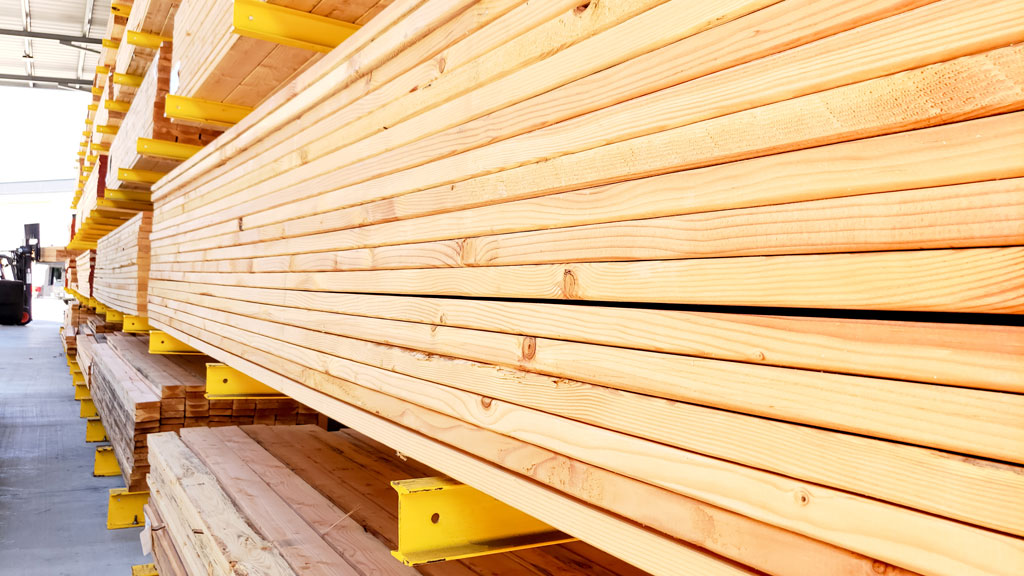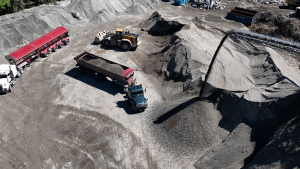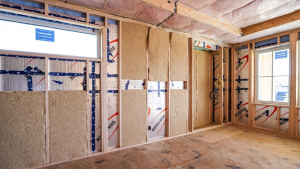An analysis done recently by the Western Retail Lumber Association (WRLA) indicates increases in the price of lumber should have surprisingly little impact on the cost of building a new home.
Lumber material costs make up only about four per cent of a new home’s price, according to the analysis. Labour accounted for 50 per cent of new home costs, followed by mechanical, electrical, heating, cooling and plumbing accounting for 22 per cent, and foundation work accounting for five per cent of the cost.
Members of the WRLA decided to break down the average bill of a brand new build in Canada because lumber prices were being blamed for rising costs of housing and they wanted to find out if that was the case.
“For lack of a better expression, I felt like lumber was sort of taking a black eye in terms of the pricing,” explains WRLA president Liz Kovach. “We really wanted to do some more digging in terms of what exactly does that mean.
“We really wanted to say, ‘Well, here are what the relative costs are when building a house.’ It kind of seems like lumber has been this bad guy for a little bit, but in this big scheme of homebuilding it actually represents a small percentage of a home.”
As lumber prices have reached record highs in North America, the cost of housing has been discussed at length. Some builders were claiming that it was costing $50,000 more to build a home as a result of the higher lumber prices, but the WRLA felt the numbers didn’t add up, even though a report showed that the wholesale cost of structural panel wood composite had more than quadrupled in just a year.
The analysis confirmed material costs are only part of the bill when people plan to build a new home.
“It’s important to keep things in perspective,” Kovach notes. “Many new homes that are being built are large houses, but the proportion of the bill that’s lumber is relative.”
Builders in the U.S., meanwhile, have also blamed high lumber prices for adding to the cost of building new homes, but the WRLA believes that is for other reasons, namely tariffs imposed on Canadian lumber.
“If you’re listening to what’s happening in the U.S., they are paying tariffs on lumber prices. They’re going to see higher prices simply because they’ve implemented tariffs on Canadian lumber so that cost is getting passed on to the consumer.”
Along with lumber, kitchen and trim work, and floor and roofing systems, each accounted for four per cent of costs, with siding and soffit and windows and doors accounting for three per cent each, flooring accounting for two per cent, and shingles, paint and insulation each accounting for one per cent of the cost.
Kovach says it wasn’t surprising that labour accounted for half the cost of building a new home.
“You need people to build and you need skilled people to build. I wasn’t surprised to see that 50 per cent for labour costs. I did expect the materials costs to be a little bit higher though.”
Builders often have funds set aside for potential price escalations, Kovach says, but with COVID-19 and the need for housing “we are in a perfect storm of issues.”
The wildfires in B.C. could also potentially lead to more issues, particularly for lumber, as the supply chain is very delicate, she says.
“I can tell you that some operations have been impacted. Logging is going to be difficult in some areas. Rail has been impacted by it coming out of B.C. and people are relying more heavily on trucks, so we’re going to be seeing some more delays again.”
The WRLA expects the prices of lumber to start dropping from historically high rates, but consumers will still have to wait as there is presently significant lead times on products.
“We are starting to see lumber prices come down in the futures market,” says Kovach. “Futures are showing that we’re supposed to continue to decline but it is dependent on what’s going to happen with the fibre in B.C. right now.”
Kovach says the lumber supply chain is much like the food supply chain, and if one link is broken everything in the chain is slowed.
“When we go to the grocery store, we don’t stop to think where our food comes from because usually everything is always there, and when food costs escalate people are upset. But one of the things we’ve learned about in this last year is that our supply chains can be very delicate.”
The supply chain is very connected and happenings elsewhere can affect commodities, says Kovach. For example, materials like OSB and plywood and vinyl products that go into flooring, windows and doors are dependent on resins that are manufactured in Texas, but many plants are not fully online yet after the recent big freeze.
Some plants had more than 5,000 leaks and “you’re dealing with chemicals so it’s not like you could just go in and fix them.”











Recent Comments
comments for this post are closed